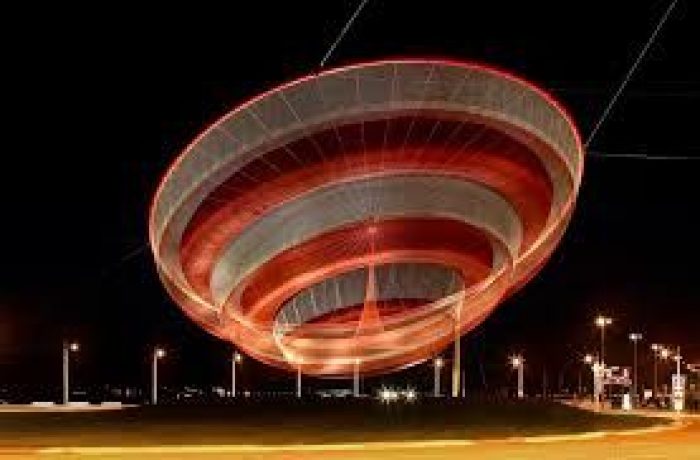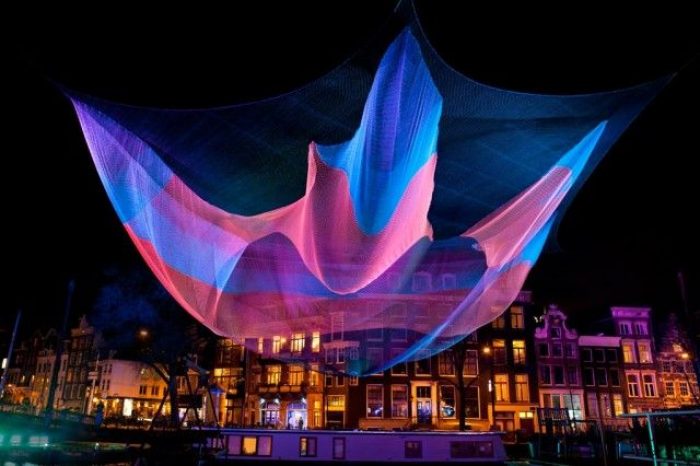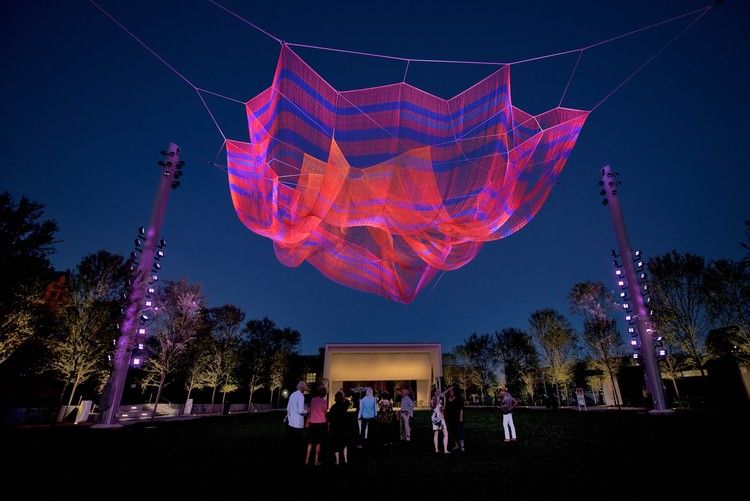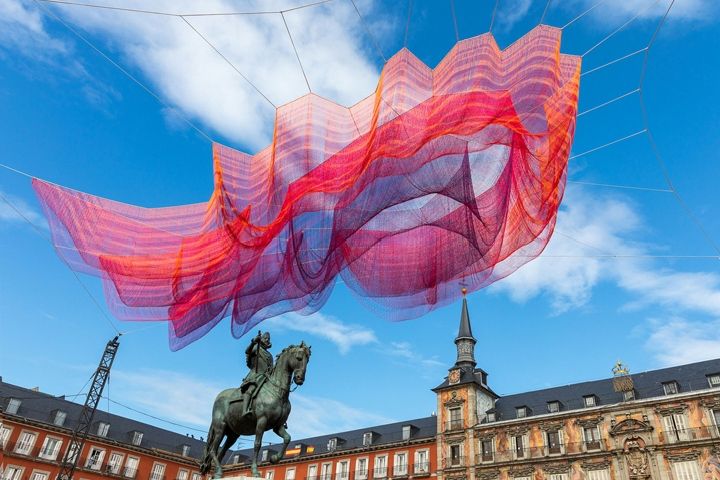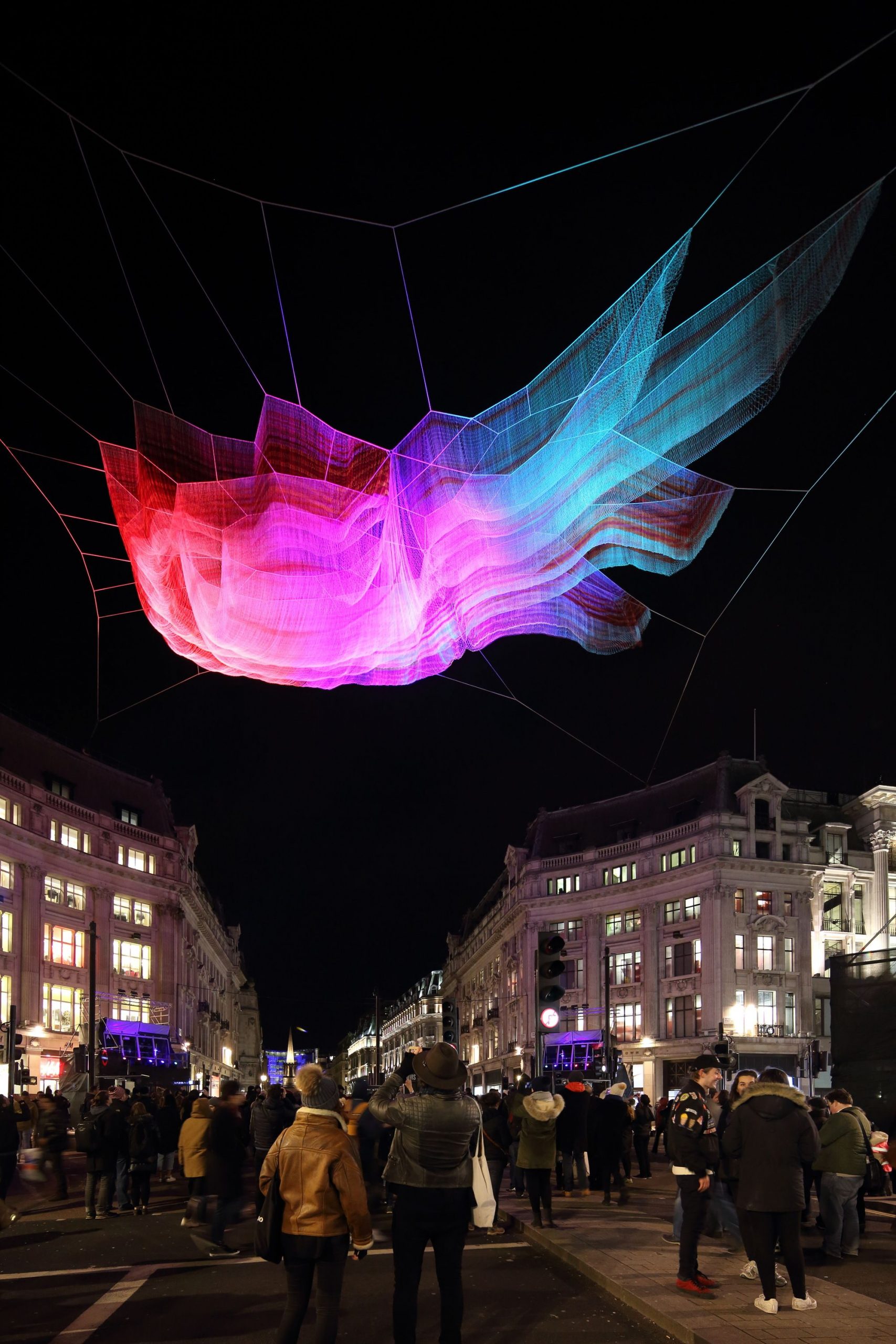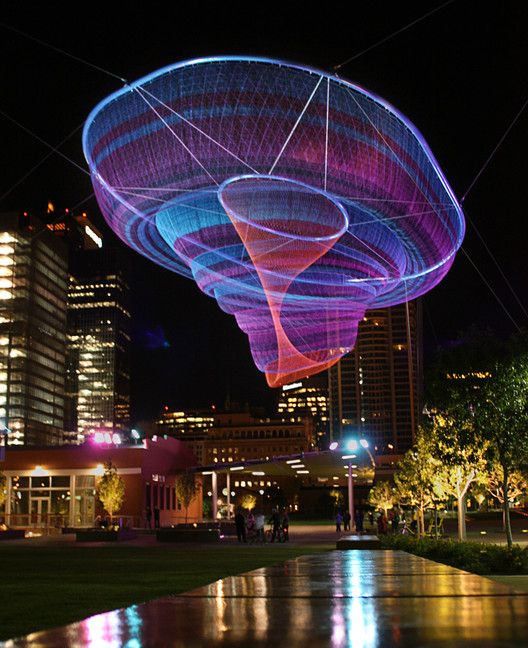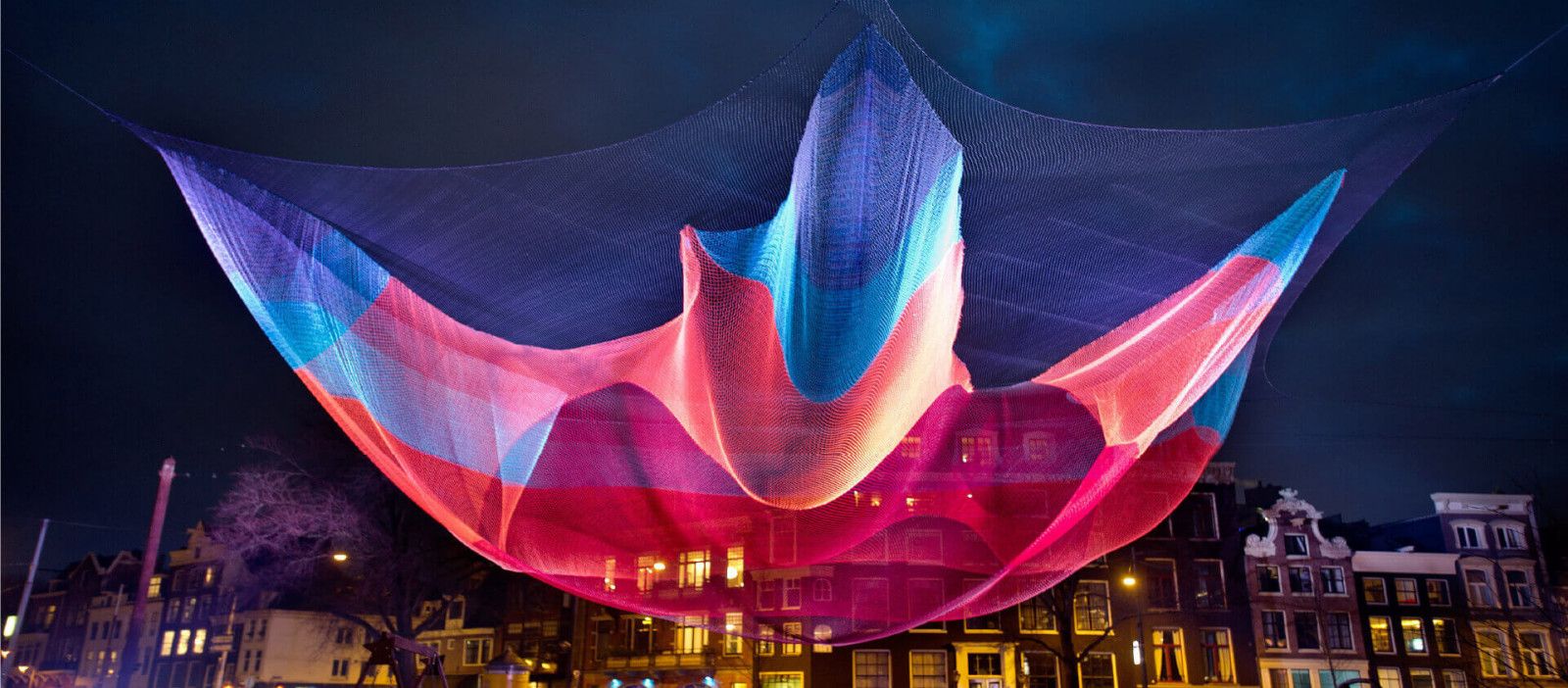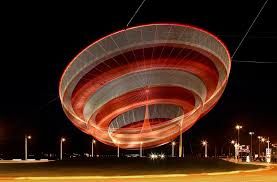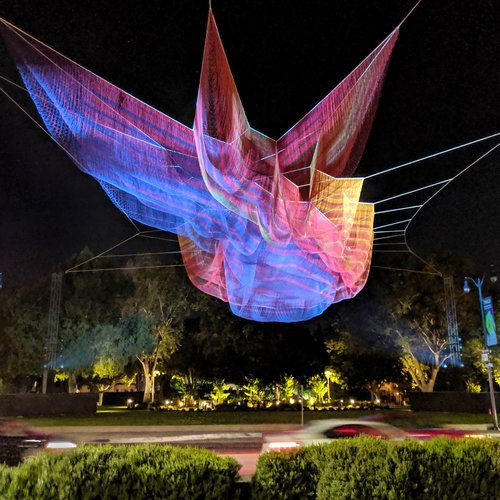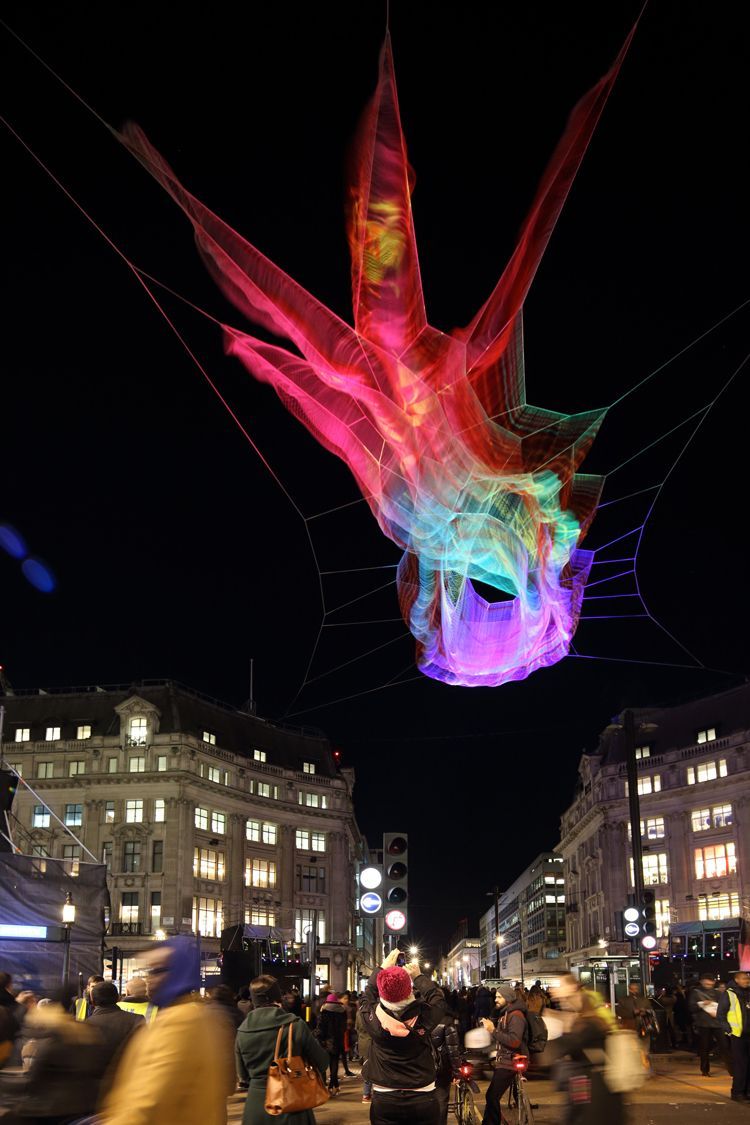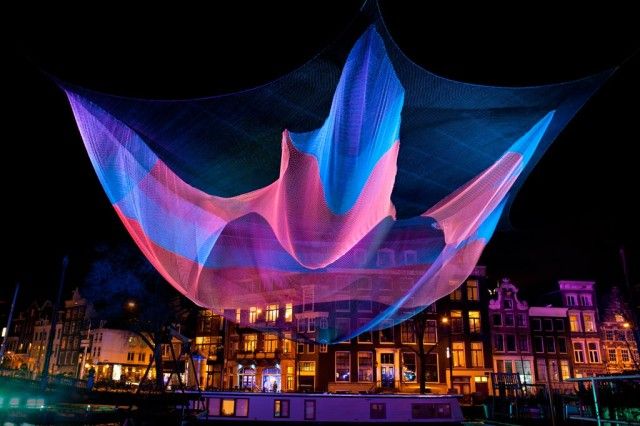Net Sculptures by Janet Echelman: There is a fishing village in India called Mahabalipuram that is famous for sculpture. While visiting Mahabalipuram, American artist Janet Echelman got a brilliant idea. She observed the graceful movements of the local’s nets as they caught fish and was struck with the notion of how nets could be used in art. Echelman envisioned a structure as large as a building while remaining light and versatile; she could picture the net rippling in the wind and flowing with the movement of the environment around it.
Janet Echelman Team:
To make this vision a reality, Janet Echelman gathered a crew of professionals, including mechanical engineers, lighting designers, aeronautical engineers, fabricators, and architects. With this capable team, Echelman has created numerous air-borne net sculptures for events and special occasions around the globe.
The net sculpture she designed for Cidade Salvador Plaza is credited as the first permanent, monumental public sculpture that uses a completely pliable set of membranes. The city now considers the sculpture as its personal symbol. Echelman also created a sculpture called Tsunami 1.26, for the 2010 Chile earthquakes that resulted in a tsunami.
This installation was made of lace and modeled after the shape of the tsunami. It was looked upon as a symbol of unification throughout Chile and was very much appreciated by the population.
Echelman’s 3D multi-layer net sculptures are created with a combined effort of physical and mechanical knotting. Each of her sculptures uses recyclable tinted polyester and is suspended in the air using a few steel poles and giant steel rings. The result of all this hard work and effort is a majestic aerial light show at night and a fascinating shadow show in the daylight.
Echelman goes out of her way to make each sculpture as site specific as she can, using influences from the surrounding area to personalize the sculpture for the viewers. Echelman’s net sculptures are truly a sight to behold.
Courtesy of Janet Echelman
Courtesy of Janet Echelman
Courtesy of Janet Echelman
Courtesy of Janet Echelman
Courtesy of Janet Echelman
Courtesy of Janet Echelman
Courtesy of Janet Echelman
Courtesy of Janet Echelman
Courtesy of Janet Echelman



